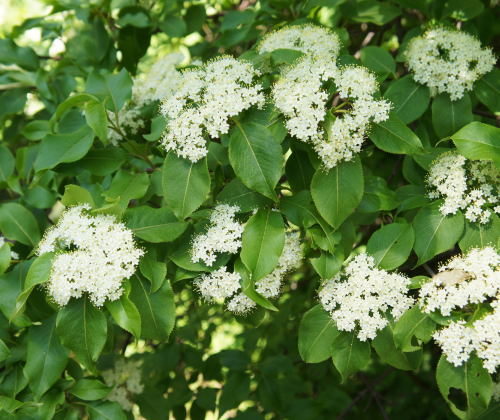Rusty Blackhaw Viburnum
Rusty Black-Haw Viburnum, Virburnum rufidulum
Easily grown in average, dry to medium, well-drained loams and even in the soils of Parker County. Plant in full sun to part shade. Mature size 15 feet x 10 feet. Blooms in late spring with large creamy white blossoms, followed by berries. Plants generally grow denser in full sun. More than one plant should be used in order to facilitate proper pollination necessary for abundant fruit production.
Promptly remove root suckers to prevent colonial spread unless naturalization is desired. Southern black haw, also commonly called rusty black haw or rusty nannyberry, is a deciduous, suckering shrub or small tree that typically grows 10-20′ tall. It is native to Texas, where it typically occurs in rocky or dry woods,
valleys, thickets. The dark green leaves are glossy, leathery, about 4″ long. Leaf undersides, buds and young stems are covered with rusty brown hairs. Tiny white flowers bloom in spring. Flowers are followed by clusters dark blue berries that ripen in September – October. Birds and other wildlife are attracted to the berries. Foliage turns reddish purple in fall. Southern black haw is distinguished from the similar black haw (V. prunifolium) by its glossy green leaves and rusty brown hairs. Use often as screens, hedges, and shrub borders along the perimeter of a landscape. This viburnum is a shrub or tree, note it will sucker. If a single tree is the desire, pruning suckers will be necessary. This tree is pretty much free of disease or pest. A great fast growing tree or shrub.

